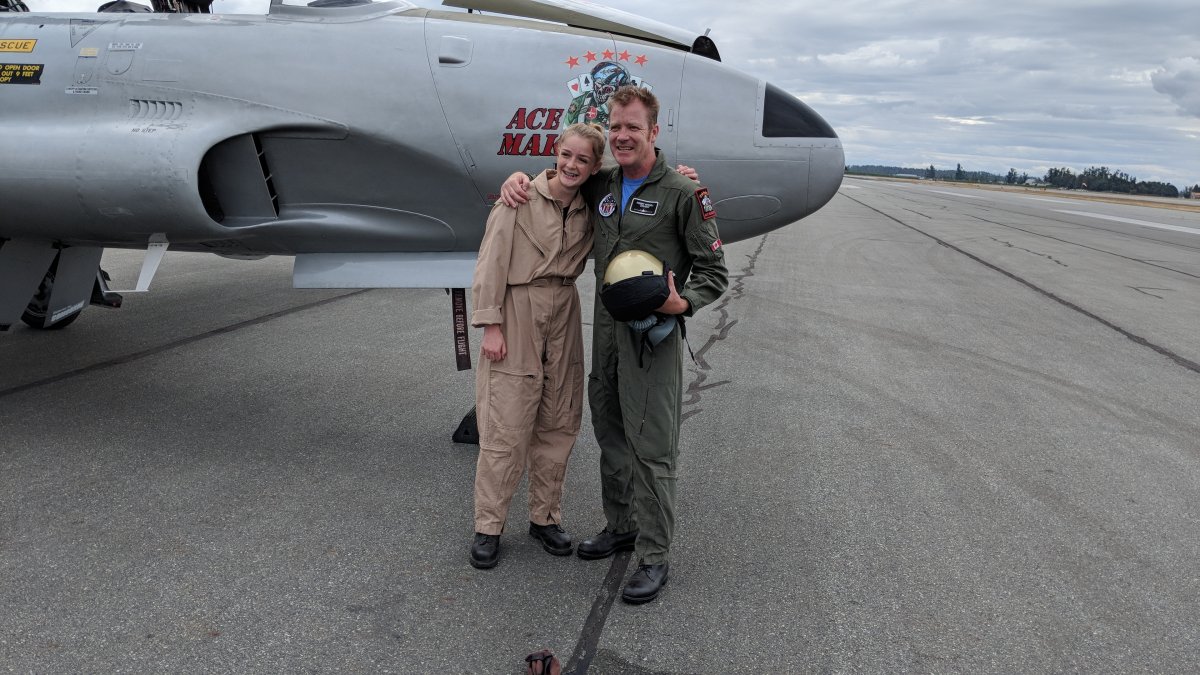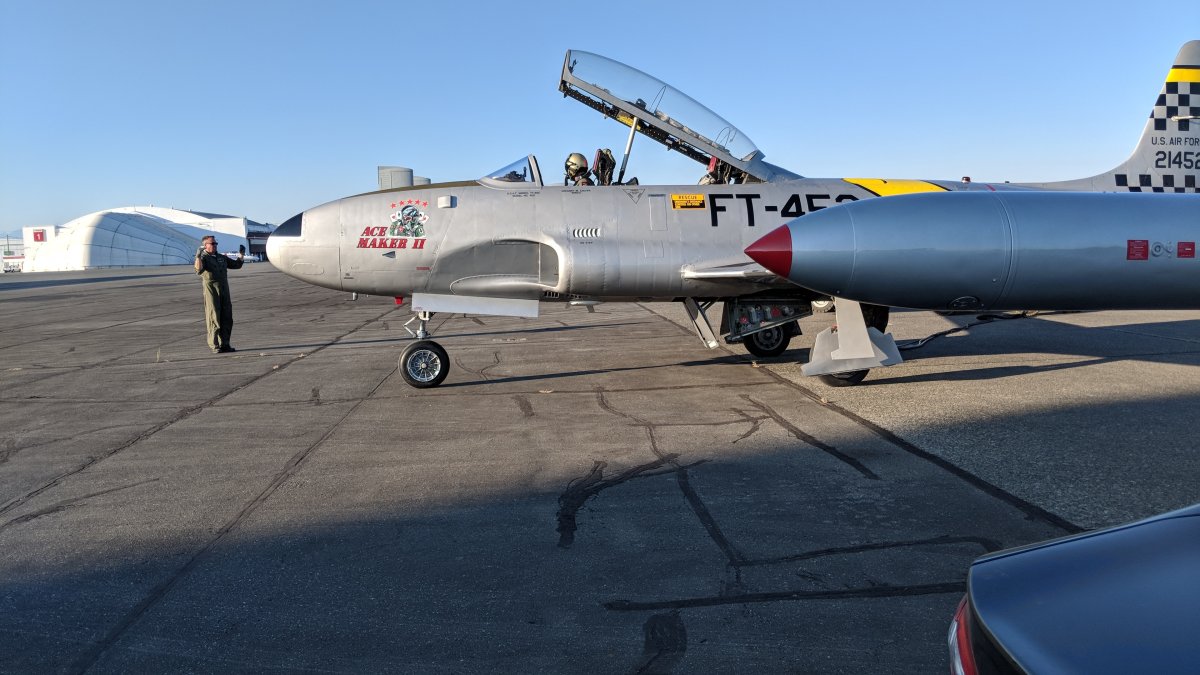Aviation history was highlighted at the 2018 Abbotsford International Airshow, as a Lockheed T-33 jet — a crucial tool in preparing pilots for the Korean War — took to the skies.

Painted in war-era colours, third-generation pilot Rob “Scratch” Mitchell captained the “Ace Maker” over hundreds of aviation fans.
The plane is a crowd favourite according to “Scratch,” who was given his nickname following a refueling mishap during his first week as an CF-18 fighter pilot with the Royal Canadian Air Force.
“I always get people saying, ‘That was my favourite,'” Scratch said, who likens the T-33 to the purr of a classic muscle car.
The veteran pilot has a keen sense of what each aircraft brings to an airshow, having captained the Snowbirds and flown a vintage F-86, among other planes.
Mitchell compares the way a CF-18 wows the crowd with speed, noise and fury to the thrill of watching a Formula One car, whereas the T-33’s “art deco design and unique signature in the sky” makes it a performer “no one dislikes.”
READ MORE: Montreal veteran gets 70-year-old wish by flying in B-25 bomber
The aircraft was the U.S. Air Force’s first operational jet, taking flight in 1944 as a training jet for the cost-conscious defence department.
Shortly after war broke out on the Korean peninsula, the Royal Canadian Air Force ordered 30 of the popular “Silver Star” T-33 aircraft, as the country ramped up its involvement.
The T-33’s “smooth” performance led the RCAF to award Canadair a contract to build more than 600 of the jet trainers.
“Flying the T-33 is more a demonstration of the grace of the aeroplane, making pretty ribbons in the sky,” Mitchell says, who sees the sky as his “stage.”
“It’s more of a dance than anything else.”
The aircraft Mitchell flies today is the last T-33 retired by the RCAF, and with his father’s history in military aviation, it carries a personal significance.
READ MORE: Spitfire plane shot down in 1944 restored and flying once again
On November 9, 1950, training provided by the T-33 was put into action, as the larger P-80 Shooting Star — sibling to the Lockheed trainer — was involved in the war’s first aerial combat involving two jets.
The USAF P-80 downed a Soviet-era MiG-15 over northwestern Korea, the first of 827 MiG jets to be shot down during the war.
The smaller T-33 would never see combat, but its ability to reach speeds nearing 1,000 km/h made it useful for frontline reconnaissance missions.
WATCH: Abbotsford airshow pilots share their favourite part of the famous aviation festival








Comments